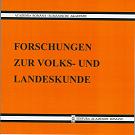DIE BILDENDE KUNST DER RUMÄNIENDEUTSCHEN VON 1949 BIS 1989 IM SPIEGEL DEUTSCHSPRACHIGER PERIODIKA
The plastic art of the German minority in Romania from 1949 to 1989 mirrored in German periodicals
Author(s): Gudrun-Liane IttuSubject(s): Fine Arts / Performing Arts
Published by: Editura Academiei Române
Keywords: plastic arts; German minority; communist rule; five stages; specific characteristics.
Summary/Abstract: The paper analyses the transformations which underwent in the plastic art of the German minority in Romania during communist rule and identifies several stages with specific characteristics: a./ the years from 1949 to 1954, characterized by rigid political dogmatism, marked a period when all the artists had to follow the paradigms of socialist realism, b./ named the “little political thawing”, the time span from 1954 to 1957 was characterized by the return to traditional motifs and also by expressive representations, c./ between 1958 and 1965 – as a reaction to the Hungarian Revolution – there can be identified a return to dogmatism; in art, takeovers from abroad were forbidden. d./ the time span from 1965 to 1971, known as the “big political thawing”, was characterized by a certain opening of the “Iron Curtain” which lead to an unprecedented development of the plastic arts. e/ in 1971 the dictator Ceauşescu presented the “July thesis”, marking the turning away from the pro-occidental orientation which had characterized the previous stage. During this period amateur artists became privileged, while experimental art was marginalized. Until 1989 most of the renowned German artist left Romania and settled in western countries. During the four decades of communist rule analyzed by the paper, a lot of gifted German artists were active in Romania and represented the country abroad.
Journal: Forschungen zur Volks- und Landeskunde
- Issue Year: 2012
- Issue No: 55
- Page Range: 165-182
- Page Count: 18
- Language: German
- Content File-PDF

